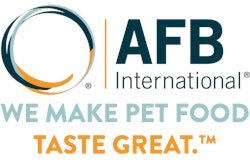
Palatability is a major player in the petfood industry-if the product you're selling isn't appealing to pets, your customers will soon go elsewhere. Staying on top of the latest research and products, as well as expanding to fit the needs of the industry, are key to ensuring that pets, and their pet parents, are satisfied.
AFB International's research in the last year has made significant strides in two areas: cat food preferences and the impact of a fixed diet on those preferences, and the company's expanded use of the electronic tongue.
AFB used their automated feeding setup and offered cats two diets, one of which they knew was going to be clearly preferred based on a previous two-day study, and began a longer-term study. "We offered the same diet for three-and-a-half months," says Jennifer Radosevich, vice president of R&D and regulatory affairs. "And we measured the food intake, the intake ratio of the feeding patterns and the body weight and the like. If you went across the three-and-a-half month period, the first choice and intake ratio did not change. It was 80% across the board-and that was really surprising to us, because, again, the perception is that cats are finicky, they want different things, and so we were really surprised to see that the preference for those particular diets did not change at all during that timeframe."
AFB has also expanded and refined the capacity of its electronic tongue. Recently, the company got new sensors to look at compounds responsible for the five basic taste attributes: sweetness, saltiness, sourness, bitterness and umami. The tongue can also use those same sensors to look at other attributes such as astringency or a metallic taste.
"Using these sensors that are sensitive to the compounds responsible for these five basic attributes, we can then do a graphical representation on what's called a spider plot," says Radosevich. "So we'll have the five different tastes and we'll quantify. If something has a lot of bitter taste on it, then the bitter taste scale will shoot up, and if something's less sweet, then the sweet taste will go down, and you can look at the balance of all these taste attributes. And you can look at and calibrate this to the cat and dog preference and see what balances of taste attributes they prefer."
AFB has launched over a dozen new global palatants in the last year. "They're based on new technology, high-performance flavor technology," says Radosevich. "Much like the balance that we're finding in our specific flavors with the electronic tongue, these were developed with the concept of working with a wide variety of kibbles to balance out the taste profiles." Depending on the kibble base (grain versus meat-based), different types of technology are required in the form of palatants to give a good taste balance profile. "These new palatants that we've launched take that into consideration," she says.
The company has also continued the global expansion of its facilities in 2013.
Kemin Industries Inc. offers new palatability enhancers in its product lineup. PALASURANCE SP Dog Dry-Granulated is a granulated chicken liver-based palatant for tablets, supplements and treats. The product is designed specifically for optimizing tablet hardness and friability during high-speed tableting, according to Kemin, with a particle size ranging between 400 and 800 microns.
"Particle size is critical to optimum tableting performance," says Kemin. "Very fine powder is generally not compressible and does not form proper tablets. Particles with a size that is large enough to be compressed and deformed yield better tablets than very fine powders. A range in particle size also allows the particles to organize in a manner that minimizes voids which reduces variability in tablet weight, optimizes hardness and reduces friability." (For more information on PALASURANCE, see "Further palatability research.")
PALFRESH is a palatability enhancer that combines Kemin's antioxidant expertise and palatability technology to deliver longer shelf-life, maintain palatability and reduce risks associated with low-fat diets, all in one product. "We have identified an area where, in terms of oxidative stability, there are certain types of products that tend to be a challenge to stabilize," says Lynn Deffenbaugh, the company's global palatant product manager. "These are generally low-fat diets, but could also be any diet that, for whatever reason, has an insufficient level of the antioxidant that is delivered in the formulation. When the antioxidant level is low, and it is consumed during shelf-life, the diet can then oxidize and become rancid."
Not only does PALFRESH provide a way to improve the stability of a challenging diet, according to Deffenbaugh, but by incorporating the technology it also preserves the palatability of that diet. "When the diet is formulated it has palatants to make it taste good, to target a certain level of palatability, and this type of program actually provides longer-lasting palatability," she says. "So it's a combination of longer-lasting oxidative stability and longer-lasting palatability." (For more information on PALFRESH, see "Further palatability research.)
Mane Inc. is committing resources to leverage its global technologies and expertise to identify, extract and replicate specific taste stimuli at its development center in Lebanon, Ohio. The company's liquid and dry palatability enhancers for both cats and dogs are designed to maximize the pets' feeding experience. Premium and super premium products are formulated to unlock the flavor potential found in the ingredients used in value-added pet treats and formula foods. Mane has the capabilities to develop client-specific flavor compounds that deliver innovative flavor and aromatic results, according to the company.
Mane's expertise with human food extraction and encapsulation technologies provides the company with the ability to develop products that provide superior performance at application rates much lower than palatability industry application standards. These lower application rates, in turn, allow for true and proven manufacturer savings, says Mane. In addition to palatability enhancer formulations that "move the needle," Mane's consumer panels and consumer insights capabilities provide feedback concerning petfood aroma, consumer preference and consumer acceptance.
Opertech Bio Inc.'s high throughput taste evaluation technology offers a cost-effective approach to sensory evaluation that can help clients measure palatability while being novel, operational, scaleable and economical, according to the company. "There are two aspects of taste," says Scott Horvitz, president and CEO of Opertech. "There's taste quality, meaning what does something actually taste like, and there's palatability-does it taste good or is it aversive, would somebody actually ingest the ingredient?"
At the center of the company's technology is its microtiter operant gustometer (MOG), a setup which uses trained rats as expert taste testers-surrogates for human taste testers (for more on the MOG, see "Opertech's MOG in action"). "We've trained our expert taste tester to recognize sucrose, or sugar, and when he tastes [a sugar cube], he will press the right lever," says Horvitz. "Anything that doesn't taste like sugar, he will press the left lever. And after about a three- or four-week training session, our rats are between 90% and 100% accurate in being able to select their training cube. Then we use a laser beam to actually count the number of times the rats lick each one of the test samples." The technology captures two distinct but related pieces of information in a high throughput manner, according to the company: the lever presses say what something tastes like, and the laser beam counting the lick rate says how much the rodents like each one of those compounds.
"The existing technology with the trained rats can be used as a very useful complimentary tool for the petfood industry to explore basic variables influencing taste and palatability," says Horvitz. "It could really help us design approaches to experiments, and it could be used for the initial screening of novel compounds. So, that could be a step in the process."
But the current technology is also being adapted to use cats and dogs as the testers. Preliminary prototype designs for a MOG using cats instead of rats are in place with Opertech's engineering firms, and an initial apparatus could be online before the end of 2013. "It will be based on the same sort of principle as the apparatus of a presentation of a plurality of wells or samples within a given period of time," says Dr. Kyle Palmer, chief science officer of Opertech and the inventor of the MOG technology. "So it's a similar apparatus, but not identical. The only other thing is we won't necessarily give a food reward [as with the rats]-we're considering other types of rewards that wouldn't be food."
SPF - Diana has developed a tool that can map dog kibbles on the market according to key physical and chemical criteria, according to Communication Manager Sophie Munier. This map, combined with an increased level of expertise in dog palatability drivers, allows SPF to support dog food manufacturers wishing to develop increasingly efficient products.
The company has also continued to develop palatants with an aim towards answering petfood manufacturers' and pet owners' expectations, in particular through its FeelGoodProgram, which was successfully launched in 2012 and recently expanded with new aromas. (For more information on SPF's FeelGoodProgram, see "Further palatability research.")
Petfood manufacturers wanting to develop performing food need to have an objective evaluation of their products' palatability, and one of the responsibilities of palatability measurement experts and animal behaviorists is to set up preventive and corrective actions to guarantee reliable answers. Panelis is part of the Diana Pet Food division, and is an independent team of trained animal technicians, behaviorists and statisticians that observe and measure the consumption and enjoyment of petfood by canine and feline expert panels. This group has experience in the two-bowl testing methodology and has recently expanded its expertise to the monadic feeding methods. Thanks to this strong know-how in palatability measurement, Panelis established several good practices to avoid measurement biases, according to Munier.
SPF has also reinforced its full approach of palatability in order to continue increasing and sharing its knowledge on dogs and cats palatability drivers. Several studies were conducted on fundamental topics, such as:
- The impact of feeding past on the development of feeding behavior and preferences in cats.
- The role of kibble matrix and formulation in dog and cat palatability. (For more information on kibble formulation and palatability, see "Further palatability research.")
The results of these studies were used by SPF's R&D teams to develop palatants with an eye towards performing and adapting to petfood manufacturers' expectations.
In the last several months, within its strategy "The closer the better," SPF - Diana has continued to strengthen its commitment to being in closer proximity to its customers with the opening of three new facilities in Guymon, Okla., USA; Paarl, South Africa; and Saint Blaise, Quebec, Canada. With these new plants, SPF continues to serve the growing global petfood market and support local petfood manufacturers in their development projects, offering industry players performing and safe palatability solutions locally.

















